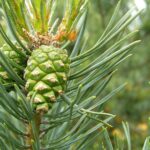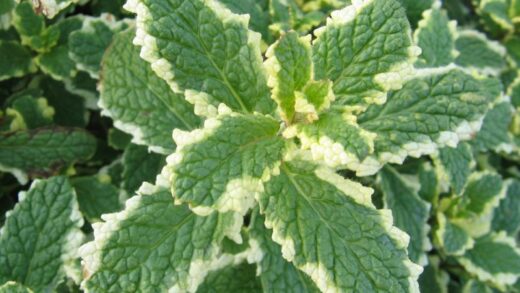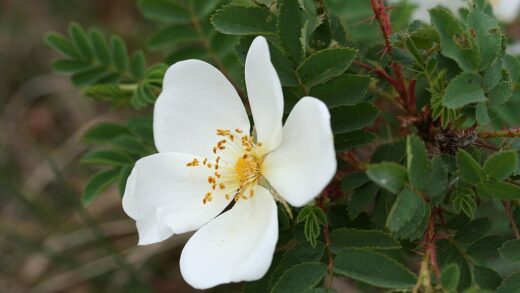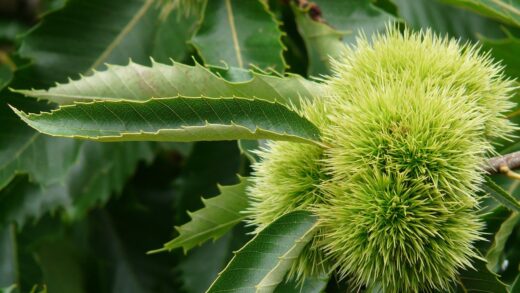Pruning is not an optional or occasional task in the care of French lavender; it is an absolute necessity for maintaining the plant’s health, longevity, and aesthetic appeal. Unlike many other perennials that can be left to their own devices, an unpruned French lavender will rapidly become a woody, leggy, and unattractive specimen with sparse foliage and diminished flower production. The primary purpose of a regular pruning regimen is to encourage a dense, bushy habit by stimulating new growth from the base of the plant. Since French lavender flowers on new stems produced in the current season, this annual trimming is also the secret to ensuring a profusion of its distinctive, beautiful blooms.
The structure of the lavender plant dictates the need for this specific type of care. The plant naturally develops a woody framework over time, and new, soft, herbaceous growth emerges from this framework each year. If the old growth is not cut back, the plant will simply add new growth onto the ends of the previous year’s stems. This leads to an ever-expanding, open, and woody structure with foliage and flowers only at the very tips. This not only looks unsightly but also makes the plant more susceptible to breaking apart under the weight of snow or from strong winds.
A well-executed pruning strategy involves two main types of cuts throughout the year: a harder pruning after the main flush of flowers and lighter, more frequent trimming, known as deadheading. The main pruning, typically done in late spring or early summer, shapes the plant and encourages the fresh growth that will produce subsequent blooms. Deadheading, the removal of spent flower stalks, is performed continuously throughout the blooming season to redirect the plant’s energy from seed production back into creating more flowers.
It is crucial to understand that French lavender, like other lavender varieties, will not reliably produce new growth from old, bare wood. This means that all pruning cuts must be made above the point where you can see small leaves or buds on the stem. Cutting back into the hard, woody base of the plant can be fatal, as this section of the plant has very few dormant buds from which to regenerate. Therefore, the key to successful pruning is to be consistent from a young age, never allowing the plant to become overly woody in the first place.
The importance of pruning for french lavender
The most immediate benefit of pruning French lavender is the promotion of a more abundant and prolonged flowering season. This species produces its flowers on the new stems that grow each spring. By pruning the plant back after its first major flush of blooms, you stimulate the growth of a fresh set of stems. This new growth will mature and often produce a second, albeit sometimes smaller, wave of flowers in the late summer or early autumn, effectively extending the period of floral display in your garden.
Pruning is also essential for controlling the size and shape of the plant. Without it, French lavender can become quite large and unruly, with a tendency to sprawl and open up in the center. A regular trim helps to maintain a compact, tidy, and mounded form that is much more visually appealing in a garden bed or container. This shaping not only looks better but also contributes to the plant’s structural integrity, making it less likely to be damaged by weather events.
From a health perspective, pruning improves air circulation through the center of the plant. A dense, unpruned lavender can trap humidity within its foliage, creating a microclimate that is ideal for the development of fungal diseases like botrytis (grey mold). By thinning out the growth and allowing air to move freely, you help to keep the leaves and stems dry, significantly reducing the risk of such infections. This is particularly important in regions with humid summers.
Finally, consistent annual pruning is the key to the plant’s longevity. An unpruned lavender quickly becomes woody and unproductive, and its lifespan is often shortened. The woody stems become brittle and can split, creating wounds that can allow diseases to enter. By encouraging the constant renewal of fresh, productive growth, pruning keeps the plant vigorous and healthy for many years, preventing the premature decline that is common in neglected plants.
Timing your pruning for optimal results
The timing of your main pruning session is critical for the health and flowering of French lavender. The single best time to perform this task is immediately after the first major flush of flowers has peaked and begun to fade, which is typically in the late spring or early summer. Pruning at this moment allows the plant plenty of time during the warm summer months to recover, produce a new flush of growth, and potentially bloom again before the end of the season.
It is very important to avoid pruning French lavender too late in the autumn, especially in climates with cold winters. A hard pruning late in the season will stimulate the plant to produce a new flush of tender growth. This new growth will not have enough time to mature and harden off before the first frosts arrive, and it will be severely damaged or killed by the cold. This can weaken the entire plant and make it more vulnerable to winter dieback. A very light tidying up after the last flowers fade is acceptable, but any significant cutting back should wait until spring.
Similarly, you should avoid pruning hard in the very early spring before new growth has started. While it may be tempting to “clean up” the plant as soon as the weather warms, it is much better to wait until you can see the small, new buds beginning to emerge on the stems. These buds are your guide, showing you exactly where the living parts of the plant are and ensuring you do not cut back too far. Pruning after these buds appear allows you to selectively remove any winter-damaged or dead stems while preserving the viable growth.
In summary, the ideal pruning calendar for French lavender involves two key periods. The main, more significant pruning should occur in late spring or early summer after the first bloom. This is followed by continuous deadheading throughout the summer to encourage more flowers. A final, very light trim can be done in early autumn to tidy the plant for winter, but all major structural pruning should be reserved for the post-bloom period.
Techniques for light pruning and deadheading
Light pruning, which includes deadheading, is an ongoing task throughout the blooming season that keeps the French lavender looking its best and encourages maximum flower production. Deadheading is the simple act of removing the flower stalks once the blooms have faded. This prevents the plant from expending its energy on developing seeds and instead channels that energy back into producing more foliage and, most importantly, more flowers.
The technique for deadheading is straightforward. Follow the spent flower stem down from the faded bloom to the point where it meets a set of leaves on the main stem. Using a pair of sharp, clean pruning shears or snips, make a clean cut just above this set of leaves. For a tidier appearance, you can cut the stem back even further, down into the main body of the plant’s foliage. This practice not only stimulates reblooming but also maintains a neat and clean look.
This type of light trimming can be done every week or two during the peak flowering season. It is a quick and easy task that pays huge dividends in the length of the bloom period. In addition to removing spent flowers, you can also use this time to lightly shape the plant by snipping off any errant stems that are growing out of proportion with the rest of the plant. This continuous light grooming helps to maintain the desirable mounded shape.
When you are harvesting lavender flowers for crafts or arrangements, this can serve a dual purpose as a form of light pruning. When cutting fresh flowers, be sure to cut a long stem that goes down into the leafy part of the plant. This is effectively the same as deadheading and will encourage the same regenerative growth. By harvesting your lavender regularly, you are actively helping to keep the plant productive and well-shaped.
Hard pruning to rejuvenate older plants
While the rule of thumb is to never cut into old wood, there is an exception for when you need to attempt to rejuvenate an old, woody, and overgrown French lavender plant. This is a higher-risk procedure that is not always successful, but it can sometimes save a plant that would otherwise need to be replaced. This type of hard pruning should only be done in the spring, after you see new growth emerging, which confirms the plant is still viable.
The goal of a rejuvenation prune is to drastically reduce the size of the plant and encourage new growth from further down on the woody framework. To do this, you will need to carefully inspect the base of the plant for any small shoots or latent buds on the lower, woodier stems. These are your targets. Using a sharp pair of loppers or a pruning saw, cut the old, thick stems back to a point just above one of these new shoots.
You should not cut the entire plant down to the ground at once. A more successful approach is to prune it back in stages, either over several weeks or by pruning only one-third of the old stems each year over a three-year period. The gradual, three-year approach is less shocking to the plant and allows the remaining stems to continue photosynthesizing and supporting the new growth. If you do cut it all back at once, you must leave some leafy stems to provide energy for the plant’s recovery.
After a hard pruning, the plant will need careful aftercare to support its recovery. Ensure it is watered appropriately, but do not overwater, as the reduced foliage means it will use less water. A light application of a balanced fertilizer can provide the nutrients needed for the burst of new growth. Be patient, as it may take a full season for the plant to recover and begin to resemble a healthy lavender again.
Common pruning mistakes to avoid
The most common and most serious pruning mistake with French lavender is cutting back too far into the old, bare wood. The woody stems have very few dormant buds, and if you cut below the last visible green leaf or bud, that stem will likely not regrow, and you may kill the entire plant. Always be conservative and make your cuts above visible signs of life, especially on the main structural stems of the plant.
Another frequent error is pruning at the wrong time of year. As mentioned, pruning hard in the late autumn is a major mistake in colder climates because it encourages tender new growth that will be killed by frost. This not only wastes the plant’s energy but can also create entry points for disease on the damaged stems. Stick to the late spring or early summer for your main pruning and only perform a light tidying up in the fall.
Using dull or dirty pruning tools is another mistake that can harm your plant. Dull blades can crush and tear the stems instead of making a clean cut, creating a ragged wound that is slow to heal and more susceptible to disease. Dirty tools can transfer pathogens from one plant to another. Always use sharp, high-quality pruning shears and be sure to sterilize them with rubbing alcohol or a bleach solution between plants, especially if you have been trimming any diseased material.
Finally, a lack of consistency is a mistake that leads to overgrown plants. Pruning is not a one-time fix; it is an annual commitment. Skipping a year of pruning will allow the plant to put on a significant amount of woody growth, making it much harder to get it back into a good shape the following year without resorting to a risky hard prune. By making pruning a regular part of your annual garden maintenance routine from the time the plant is young, you can easily keep your French lavender healthy, compact, and beautiful.




















